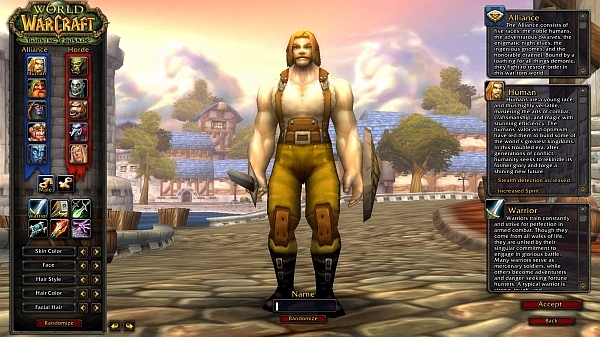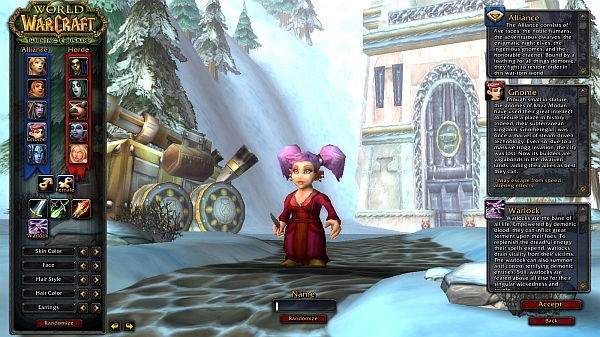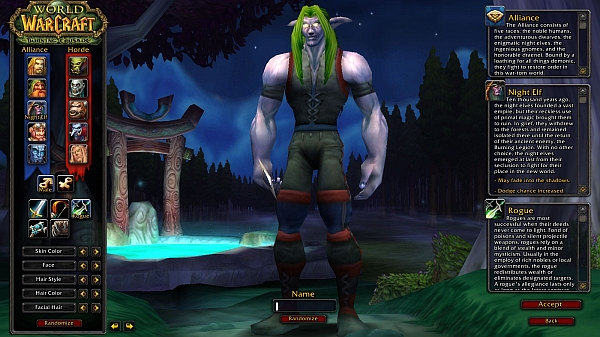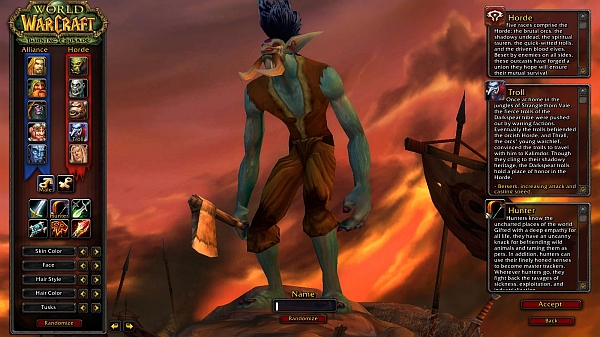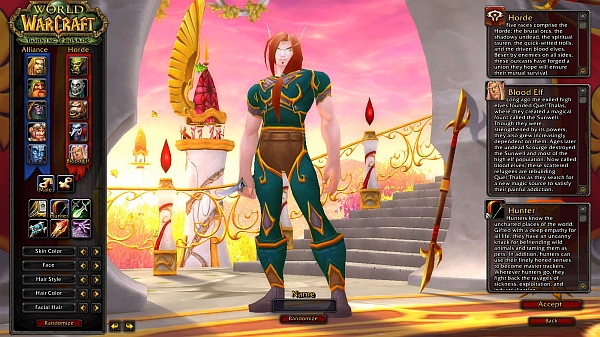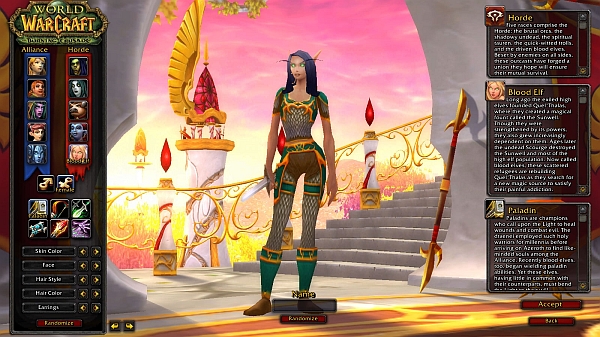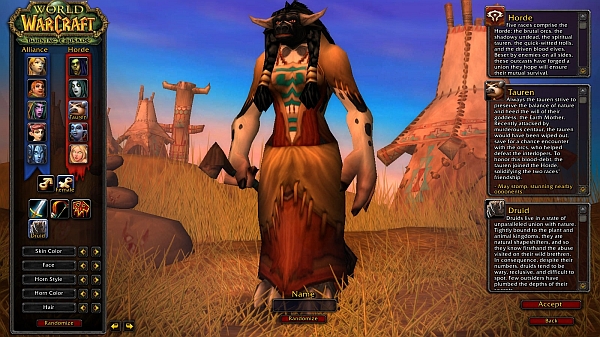|
WORLD OF WARCRAFT, A PRIMER
First released in 2004, Blizzard Entertainment's World of Warcraft or WoW is a massively multiplayer online role-playing game (MMORPG) now with over 10 million players worldwide. For a nominal fee to purchase the software and to subscribe to the game, WoW allows a player to create and control a player character (PC) represented by a fully-rendered avatar (also lovingly called a toon) in a high-fantasy game world where they can explore cities and landscape, participate in quests and battleground events, and fight and interact with computer-controlled non-player characters (NPCs) as well as other players. The WoW official website describes the game: "World of Warcraft enables thousands of players to come together online and battle against the world and each other. Players from across the globe can leave the real world behind and undertake grand quests and heroic exploits in a land of fantastic adventure." It is the coming together of "thousands of players" simultaneously in a vast, persistent game world framed by and filled with stories that makes an MMORPG like World of Warcraft different than other computer and console video games. Constance Steinkuehler (2008) describes games like WoW as "persistent social and material worlds loosely structured by open-ended (fantasy) narratives, where players are largely free to do as they please" (p. 10) with surprisingly rich virtual social, political, historical, geographical, and material economies. World of Warcraft is set in the fantasy world of Azeroth, first introduced in Blizzard's 1994 real-time simulation computer game Warcraft: Orcs and Humans. The WoW website says, "World of Warcraft draws heavily upon the lore of the Warcraft universe. Long-time fans of the Warcraft games are finally able to step into the world from a player's perspective, and experience the universe firsthand. People, places, and units from the strategy games are brought to life in World of Warcraft." Players can create a toon from one of ten playable races: Dwarves, Gnomes, Humans, Night Elves, Draenei, Orcs, Tauren, Trolls, Undead, or Blood Elves. According to the WoW website, "Each of these races has unique racial traits and certain playable classes available to them. These racial traits and class options help them to accomplish their goals in the world." Players can choose from nine playable classes: Druid, Hunter, Mage, Paladin, Priest, Rogue, Shaman, Warlock, or Warrior. Each class is differentiated by what skills, abilities, and spells they possess. Once a character has been created, named, and dropped into the game world, the player can take advantage of "multiple professions each with unique benefits, thousands of quests to undertake and complete, multiple modes of transportation, [and an] extensive and elaborate storyline." |
|
 0
0  1
1  2
2  3
3  4
4  5
5  6
6  7
7  8
8  9
9  10
10

|
|
All other material is licensed under a Creative Commons Attribution-Noncommercial-Share Alike 3.0 Unported License (2008) |

